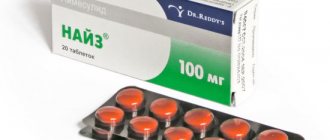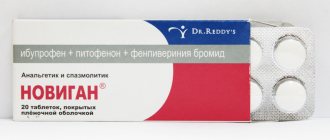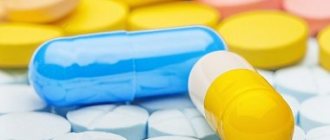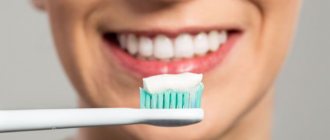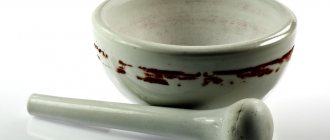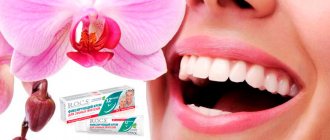How and when teething occurs in children
First, let's look at the cutting process itself. It is worth noting that this happens differently for each child. But, nevertheless, there is a certain pattern in this process, by which pediatricians can recognize normality or pathology. Let us dwell on this issue in more detail.
Scheme of baby teeth eruption
Parents often ask this question: “What time do children start teething?”
Baby teeth are the first to erupt in children. They cut through in the following sequence:
- At the age of six to seven months, the eruption of the lower incisors begins.
- Starting from the eighth to ninth month, the upper incisors begin to erupt.
- From the age of ten months, the upper lateral incisors erupt.
- At 1 year of age, two lower lateral incisors appear.
- Between 12 and 15 months, the first molars appear.
- Fangs appear at the age of 17-20 months.
- Second molars appear between 20 and 24 months.
It is worth noting that teeth of the same name erupt simultaneously on each half of the jaw. As a rule, the lower ones tend to erupt before the upper ones.
There is also a formula by which you can quickly calculate the approximate number of milk teeth required. According to this formula, it is necessary to subtract the number 4 from the child’s age in months. This formula is often used by pediatricians, which makes it possible to identify discrepancies in the timing of teething. The most common reason for the delay in this process is the development of rickets . Rickets is a disease of young children associated with a lack of vitamin D, which affects the condition of the entire body, primarily the musculoskeletal system (reduced muscle tone, softening of bones, bone deformation).
According to a certain pattern, the formation of a child’s primary bite occurs. The bite is the relationship between the teeth of the upper and lower jaw. The final formation of the primary occlusion occurs by 2.5 years. The deciduous dentition plays a large role in the development of speech and the ability to chew food. Then, as the baby grows, there is a change from dairy to permanent.
Scheme of eruption of permanent teeth
The time interval between the loss of a baby tooth and the appearance of a permanent tooth is four months. At the age of five years, the first permanent teeth appear—the first molars. There is also a formula for the eruption of permanent teeth. According to this formula, in order to calculate the number of constants, you need to multiply 4 by the child’s age in years and subtract 20.
After the first permanent teeth appear, a mixed bite is formed.
Symptoms often appear during the eruption of baby teeth and, as a rule, in children in the first year of life . We must not forget that after the baby’s teeth appear, they need to be properly cared for. You can find out more about this issue in our article.
After your baby's teeth appear, they need to be properly cared for.
Symptoms of teething in a baby
With this physiological process, you may notice symptoms in your baby such as:
- Inflammation and swelling of the gums.
- Hypersalivation. Hypersalivation is an increase in salivation.
- Decreased appetite. This is due to pain in the gum area.
- Sleep disturbance, crying at night, moodiness. All these symptoms are inextricably linked with the accompanying pain syndrome during teething. Our article will help you figure out how to help your baby fall asleep.
- Developing the habit of putting everything in your mouth. This is associated with itching and discomfort in the gum area.
- Increased body temperature. In some cases, the temperature may rise within 37.2-37.5 degrees.
Based on these symptoms, you can understand that the child is teething.
Buy Nurofen for children film-coated tablets 200 mg No. 8 in pharmacies
Instructions for use Nurofen Buy at the pharmacy Nurofen for children tablet p.o 200 mg No. 8 Dosage forms tablets 200 mg Synonyms Ibuprofen Ibufen Nurofen for children Group Anti-inflammatory drugs - derivatives of propionic acid International nonproprietary name Ibuprofen Composition Active substance: ibuprofen. Manufacturers Reckitt Benckiser Healthcare International Ltd (Great Britain) Pharmacological action Anti-inflammatory, analgesic, antipyretic. Non-selectively inhibits two isoenzymes of cyclooxygenase. The maximum concentration is created after 0.5-1 hour. Slowly penetrates into the joint cavity, but lingers in the synovial tissue, creating higher concentrations in it than in plasma. Subject to biotransformation. Excreted by the kidneys. The anti-inflammatory effect is associated with a decrease in vascular permeability, improvement of microcirculation, decreased release of inflammatory mediators from cells and suppression of energy supply to the inflammatory process. The analgesic effect is due to a decrease in the intensity of inflammation, a decrease in the production of bradykinin and its algogenicity. A decrease in the excitability of the heat-regulating centers of the diencephalon results in an antipyretic effect. With a single dose, the effect lasts up to 8 hours. It has an antipyretic effect, the severity of which depends on the initial body temperature and dose. Reversibly inhibits platelet aggregation. Side effects : Dyspeptic disorders (nausea, heartburn, anorexia, vomiting, discomfort in the epigastric region, flatulence, diarrhea, constipation), erosive and ulcerative lesions of the gastrointestinal tract with signs of gastrointestinal bleeding, headache, dizziness, tinnitus, insomnia, agitation, visual disturbances (blurred vision, changes in color vision), fluid retention, edema, increased blood pressure, thrombocytopenia, granulocytopenia, hemolytic anemia, Quincke's edema, broncho-obstructive syndrome, allergic skin reactions. Indications for use : Rheumatoid arthritis, reactive synovitis in osteoarthritis deformans, psoriatic arthritis, acute joint attack in gout, ankylosing spondylitis (Bechterew's disease), cervical spondylosis, Barre-Lieu syndrome (cervical migraine, vertebral artery syndrome), lumbodynia, sciatica, thoracic radicular syndrome, bursitis, tenosynovitis, myalgia, neuralgic amyotrophy, occipital and intercostal neuralgia, ligament sprains, hematomas, trauma, pain in the surgical wound area, toothache, oral surgery, panniculitis, tonsillitis, pharyngitis, laryngitis, sinusitis, rhinitis , bronchitis, pneumonia, inflammatory processes in the pelvis, dysalgomenorrhea, colds, ARVI, febrile states, postural hypotension when taking antihypertensive drugs, nephrotic syndrome (to reduce the severity of proteinuria).
Dosage regimen
The drug is prescribed to adults and children over 12 years of age orally, after meals, in tablets of 200 mg 3-4 times a day. The tablets should be taken with water. To achieve a rapid therapeutic effect in adults, the dose can be increased to 400 mg (2 tablets) 3 times a day. Children from 6 to 12 years old: 1 tablet no more than 4 times a day; the drug can only be used if the child weighs more than 20 kg. The interval between taking tablets is at least six hours. Do not take more than 6 tablets in 24 hours. The maximum daily dose is 1200 mg. If symptoms persist after taking the drug for 2-3 days, you should stop treatment and consult a doctor.
Contraindications Hypersensitivity, peptic ulcer of the stomach and duodenum in the acute phase, nonspecific ulcerative colitis, aspirin-induced asthma, leukopenia, thrombocytopenia, hemorrhagic diathesis, severe dysfunction of the liver and kidneys, portal hypertension, arterial hypertension, heart failure, diseases of the optic nerve, scotoma , amblyopia, color vision impairment, pregnancy, breastfeeding. Overdose Symptoms: abdominal pain, nausea, vomiting, lethargy, drowsiness, depression, headache, tinnitus, metabolic acidosis, coma, acute renal failure, hypotension, bradycardia, tachycardia, atrial fibrillation and respiratory arrest. Treatment: gastric lavage (only during the first hour after administration), activated charcoal (to reduce absorption), alkaline drinking, forced diuresis and symptomatic therapy (correction of acid-base status, blood pressure, gastrointestinal bleeding). Interaction Reduces the antihypertensive activity of ACE inhibitors, the natriuretic activity of furosemide and hypothiazide. May increase the toxicity of methotrexate and lithium preparations. When combined with coumarin-type anticoagulants and alcohol, it increases the risk of hemorrhagic complications, and with tableted glucocorticoids - the risk of gastrointestinal bleeding. It is not recommended to use simultaneously with acetylsalicylic acid or other NSAIDs, antidiabetic drugs, phenytoin and hormonal contraceptives. Increases the concentration of digoxin in plasma. Caffeine enhances the analgesic effect of ibuprofen. Special instructions Considering the possibility of developing NSAID gastropathy, it is prescribed with caution to elderly people with a history of stomach ulcers and other gastrointestinal diseases, gastrointestinal bleeding, with simultaneous therapy with glucocorticoids, other NSAIDs and for long-term therapy. When symptoms of gastropathy appear, careful monitoring is indicated (including esophagogastroduodenoscopy, blood test to determine hemoglobin, hematocrit, stool test for occult blood). To prevent the development of NSAID gastropathy, it is recommended to combine it with PGE drugs (misoprostol). Prescribed with caution in children (up to 12 years), patients with severely impaired liver and kidney function (regular monitoring of bilirubin levels, transaminases, creatinine, renal concentrating ability is required), arterial hypertension and chronic heart failure (daily monitoring of diuresis, body weight , blood pressure). If visual impairment occurs, the dose should be reduced or the drug discontinued. It is not recommended to consume alcoholic beverages during treatment. Storage conditions List B. In a place protected from light at room temperature.
How to help your child when teething
It is important for parents to remember that the appearance of teeth is a physiological process that every baby goes through. Our goal is to alleviate the symptoms of this process. Various medications and means are used for this.
Teethers can be used as these tools. Among the teethers there are:
- Teether nipples . The most optimal and convenient option for a teether.
- Cooling teethers . There are various companies. We will give preference to Chicco. To use, you must first fill them with water and then place them in the refrigerator. Preference is given to those equipped with a handle. This will prevent the baby's hand from cooling.
- Nibblers . Nibbler is a device for the safe administration of complementary foods to children in the first six months of life. Essentially, it is a mesh or silicone container with holes. Also equipped with a handle. By placing fruit in this device, the baby will also be able to massage his gums.
Teethers can help a child during this difficult period.
These devices can alleviate the child’s condition. In some cases, this is not enough. Then there is a need to use medications. Let's list the rating of the best drugs:
- Gels, ointments for gums. They are means of local therapy. The most popular: Holisal, Kamistad, Kalgel.
- Viburkol suppositories. They are a homeopathic remedy with analgesic, sedative and antipyretic properties.
- When the temperature rises and there is severe pain, Panadol (suppositories) and Nurofen in the form of a suspension are prescribed.
The eruption of incisors and canines in babies is often accompanied by the development of unpleasant symptoms. It is important for parents to remember that this is a physiological process that requires their close attention. Often moms and dads get stressed, not knowing what to do with their child. It is necessary to remain calm and use the means described above to reduce the severity of unpleasant, painful sensations in the baby. If symptoms persist and the actions taken are ineffective, contact your pediatrician. Your doctor will help you deal with this problem. Do not self-medicate; if symptoms of the disease occur, consult a doctor promptly.
Side effects
When using the drug, the following side effects are rarely possible:
From the gastrointestinal tract: nausea, vomiting, discomfort or pain in the epigastrium, laxative effect, the occurrence of erosive and ulcerative lesions, bleeding.
From the nervous system: headache, dizziness, psychomotor agitation, insomnia.
From the hematopoietic organs: anemia, thrombocytopenia, agranulocytosis, leukopenia.
From the urinary system: impaired renal function, cystitis.
Allergic reactions: skin rash, itching, urticaria, exacerbation of bronchial asthma, angioedema, anaphylactoid reactions, anaphylactic shock, bronchospasm, fever, erythema multiforme exudative (including Stevens-Johnson syndrome), toxic epidermal necrolysis (Lyell's syndrome).
From the cardiovascular system: tachycardia, increased blood pressure.
